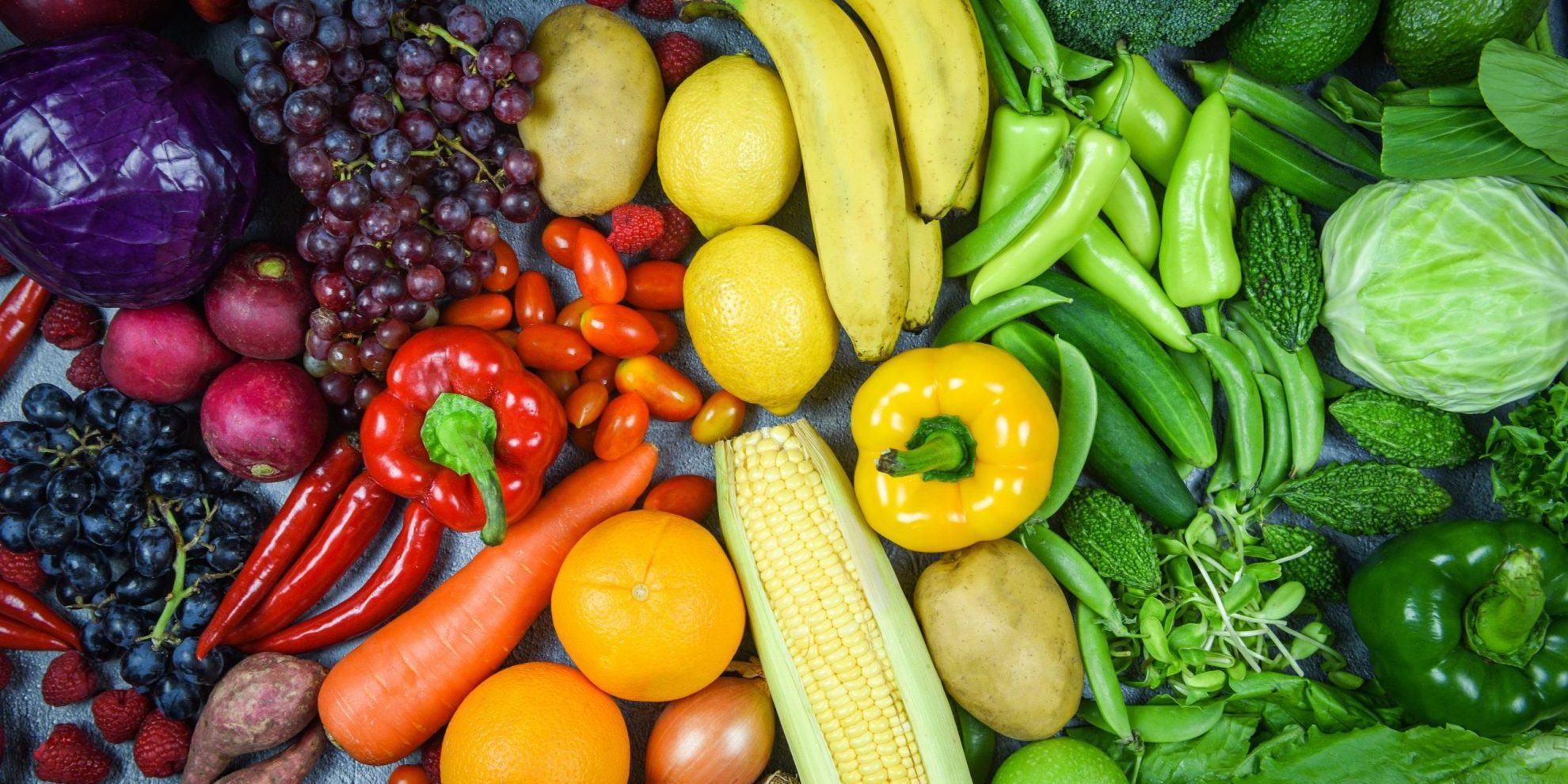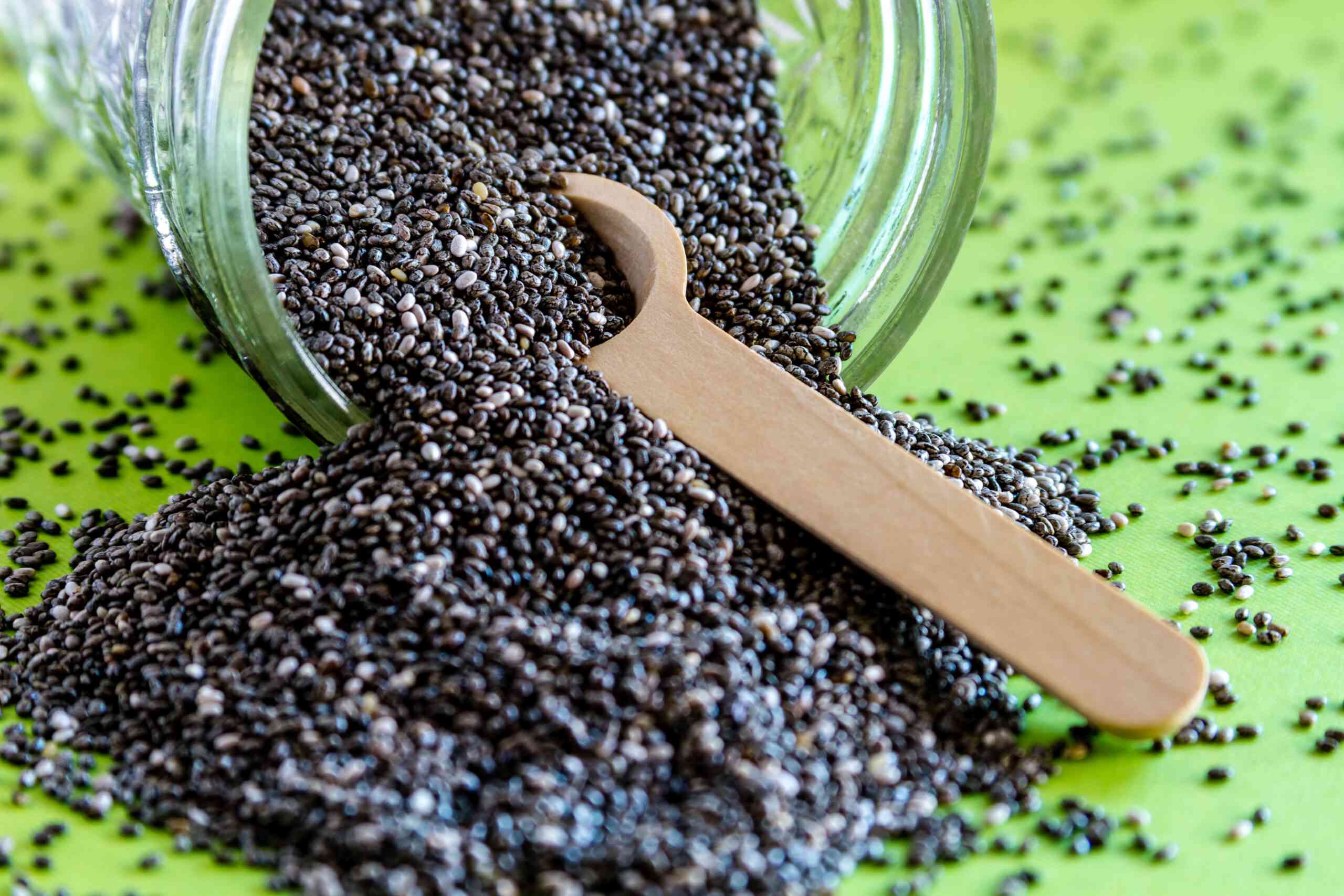Home>Gardening News and Trends>Latest News>How To Eat Healthy When You Don’t Like Vegetables


Latest News
How To Eat Healthy When You Don’t Like Vegetables
Modified: January 22, 2024
Discover the latest news on how to eat healthy even if you don't like vegetables. Transform your diet with simple tips and tricks.
(Many of the links in this article redirect to a specific reviewed product. Your purchase of these products through affiliate links helps to generate commission for Chicagolandgardening.com, at no extra cost. Learn more)
Table of Contents
- Introduction
- Understanding the Importance of Eating Vegetables
- Overcoming Your Dislike for Vegetables
- Exploring Different Cooking Methods
- Sneaking Vegetables into Your Meals
- Trying New Vegetables and Recipes
- Making Healthy Vegetable Substitutes
- Incorporating Vegetables into Your Snacks
- How to Stay Motivated
- Conclusion
Introduction
Are you one of those people who truly dislike vegetables? You’re not alone. Many individuals find it challenging to incorporate vegetables into their diet, whether it’s due to their taste, texture, or a long-standing personal preference. However, it’s important to remember that vegetables are an essential part of a healthy diet. They are packed with essential vitamins, minerals, and fiber that contribute to overall well-being and can help prevent chronic diseases.
In this article, we will explore various strategies to help you eat healthy even if you don’t like vegetables. Whether you’re a picky eater, have a sensitive palate, or simply can’t find vegetables that appeal to you, there are ways to overcome your aversion and embrace the benefits of a vegetable-rich diet.
We will discuss different cooking methods that can alter the taste and texture of vegetables, making them more enjoyable for you. Additionally, we will explore the art of sneaking vegetables into your meals, trying new recipes and vegetables, and making healthy substitutes to satisfy your taste buds. Furthermore, we’ll look at how you can incorporate vegetables into your snacks and provide tips to stay motivated throughout your journey.
By the end of this article, you will have a variety of strategies and techniques at your disposal to make healthier choices and overcome your dislike for vegetables. Remember, a balanced and nutritious diet is crucial for your overall health and well-being, and finding creative ways to include vegetables in your meals is a fantastic step towards achieving that.
Understanding the Importance of Eating Vegetables
Eating vegetables is not just a matter of personal preference; it is essential for maintaining good health. Vegetables are rich in essential vitamins, minerals, and dietary fiber, all of which play a crucial role in supporting your body’s overall well-being.
First and foremost, vegetables are packed with important vitamins that are vital for proper bodily function. They are a fantastic source of vitamin C, which helps boost your immune system and aids in collagen production for healthy skin. Additionally, vegetables like spinach and broccoli contain high amounts of vitamin K, which is crucial for blood clotting and bone health.
Furthermore, vegetables provide a wide array of essential minerals necessary for the body. Leafy greens such as kale and Swiss chard are rich in calcium, which is essential for strong bones and teeth. Iron, another crucial mineral, can be found in vegetables like spinach and lentils, and is important for oxygen transport and energy production in the body.
In addition to vitamins and minerals, vegetables are loaded with dietary fiber. Fiber plays a crucial role in maintaining a healthy digestive system, as it aids in regulating bowel movements and preventing constipation. It also contributes to a feeling of fullness, which can prevent overeating and aid in weight management.
Moreover, vegetables are low in calories and high in nutrients, making them an excellent choice for weight loss or maintenance. They provide essential nutrients while keeping your calorie intake in check. By replacing calorie-dense foods with vegetables, you can create a more balanced and nutritious diet.
Lastly, consuming a variety of colorful vegetables ensures that you benefit from a wide range of antioxidants. Antioxidants help protect your body against oxidative stress, which can lead to chronic diseases such as heart disease and certain types of cancer. Including a diverse range of vegetables in your diet helps ensure that you reap the unique benefits offered by each vegetable.
Now that you understand the importance of eating vegetables, it’s time to explore strategies for overcoming your dislike and finding ways to incorporate them into your diet.
Overcoming Your Dislike for Vegetables
If you have a strong aversion to vegetables, don’t worry – there are ways to overcome your dislike and start incorporating them into your meals. By taking a proactive approach and being open to trying new things, you may find that your taste buds can adapt and even develop a liking for vegetables.
One strategy to overcome your dislike for vegetables is to start slowly. Begin by incorporating small amounts of vegetables into your meals. Gradually increase the portion sizes as you become more accustomed to the taste and texture. This gradual approach allows your palate to adjust over time.
Another helpful technique is to experiment with different cooking methods. Sometimes, the way a vegetable is cooked can significantly change its taste and texture. Try roasting or grilling vegetables to bring out their natural flavors and add a hint of smokiness. Sautéing vegetables with herbs and spices can also enhance their taste and make them more appealing.
Additionally, consider combining vegetables with other foods you enjoy. For example, you can incorporate vegetables into dishes like stir-fries, soups, or casseroles, where the flavors of other ingredients can mask the taste of the vegetables. As you become more comfortable with the presence of vegetables in your meals, you can gradually increase the quantity.
If the texture of certain vegetables is off-putting for you, try pureeing or blending them into sauces, dips, or smoothies. This way, you can still enjoy the nutritional benefits without the noticeable texture. You can also use vegetables as fillings for omelets, sandwiches, or wraps, where their flavor can be complemented by other ingredients.
Remember, it’s all about finding what works best for you. Don’t be afraid to try different vegetables and cooking methods until you discover combinations that you enjoy. Over time, your taste preferences may change, and you may even develop a newfound appreciation for vegetables.
By being open-minded and willing to experiment, you can gradually overcome your dislike for vegetables and make them a regular part of your diet. The key is to approach it with patience and persistence. The next section will explore different cooking methods in more detail to help you make vegetables more appealing to your taste buds.
Exploring Different Cooking Methods
One effective way to make vegetables more appealing is by exploring different cooking methods. Each method brings out unique flavors and textures, offering a variety of options to suit different taste preferences. By experimenting with these methods, you can find the ones that make vegetables more enjoyable for you.
One popular cooking method is roasting. Roasting vegetables in the oven at a high temperature brings out their natural sweetness and adds a delicious caramelized texture. Simply toss your favorite vegetables with olive oil, salt, and pepper, then spread them out on a baking sheet and roast until they are tender and slightly browned. Roasting works particularly well for root vegetables like carrots, potatoes, and beets.
Sautéing is another versatile cooking method that can transform the taste and texture of vegetables. Heat a tablespoon of oil or butter in a pan, add your chopped vegetables, and cook them on medium-high heat until they are tender-crisp. This method works well for a variety of vegetables, including bell peppers, zucchini, and mushrooms.
Steaming is a gentle cooking method that helps retain the natural color and nutrients of vegetables. Place a steamer basket over boiling water, then add your vegetables and cover the pot. Steam them until they are crisp-tender, which usually takes around 5-10 minutes depending on the vegetable. Steaming works well for vegetables like broccoli, cauliflower, and asparagus.
Grilling is a fantastic method to add a smoky flavor to your vegetables. Brush your vegetables with olive oil and season them with herbs, spices, or marinades of your choice. Grill them on a preheated grill until they are slightly charred and tender. Grilled vegetables like eggplant, zucchini, and peppers can be enjoyed as a side dish or used as toppings for sandwiches and pizzas.
Lastly, consider incorporating raw vegetables into your meals. Raw vegetables provide a refreshing crunch and maintain their maximum nutritional value. Enjoy them in salads, wraps, or as a snack with hummus or dip. Experiment with different vegetable combinations and dressings to create delicious and satisfying raw dishes.
By exploring these different cooking methods, you can find new and exciting ways to prepare vegetables that appeal to your taste buds. Be adventurous in trying out various flavors, seasonings, and combinations. The next section will explore sneaking vegetables into your meals, an additional technique to increase your vegetable intake.
Sneaking Vegetables into Your Meals
If the idea of eating vegetables outright still doesn’t appeal to you, another strategy is to sneak them into your meals. By incorporating vegetables into dishes that you already enjoy, you can increase your intake without even realizing it. Here are some creative ways to do just that.
One simple technique is to finely chop or grate vegetables and incorporate them into sauces and soups. For example, you can add grated carrots or zucchini to spaghetti sauce or mix finely chopped mushrooms into a meatball mixture. The vegetables will blend in with the other flavors and textures, adding nutritional value without altering the taste significantly.
Another sneaky trick is to blend vegetables into smoothies. Add a handful of spinach or kale to your favorite fruit smoothie, and the vibrant color and sweet taste of the fruit will mask the presence of the vegetables. You can also experiment with other vegetables, such as cucumber or carrots, to add a nutritional boost to your morning or post-workout drink.
Veggie-based dips and spreads are another excellent way to sneak in some extra vegetables. Replace store-bought dips with homemade hummus or guacamole that incorporate pureed vegetables like roasted red peppers, roasted eggplant, or roasted carrots. These dips can be enjoyed with raw veggies, crackers, or as a spread on sandwiches and wraps.
Consider swapping out traditional ingredients with vegetables in certain dishes. For instance, make cauliflower “rice” by processing cauliflower florets in a food processor until they resemble rice grains. You can use this as a substitute for regular rice in stir-fries or as a base for grain bowls. Similarly, thinly sliced zucchini or eggplant can be used as a substitute for lasagna noodles in a healthier version of the classic Italian dish.
Lastly, try incorporating vegetables into baked goods. Use pureed butternut squash or pumpkin in muffin or bread recipes, or add grated carrots or zucchini to cake batters. This not only adds moisture and nutrition but also enhances the flavor profile of your baked goods.
By sneaking vegetables into your meals, you can increase your vegetable intake without feeling like you’re sacrificing your preferred tastes and textures. Be creative in finding new ways to incorporate vegetables into dishes you already love, and you’ll be well on your way to a healthier diet.
Trying New Vegetables and Recipes
If you’re not a fan of vegetables, it’s possible that you haven’t explored a wide enough variety to find the ones that appeal to your taste buds. Trying new vegetables and recipes can open up a whole new world of flavors and textures, making healthy eating more enjoyable. Here are a few tips on how to do this:
First, be open to experimenting with different types of vegetables. While you may have had negative experiences with certain vegetables in the past, remember that taste preferences can change over time. Explore your local farmer’s market or grocery store and choose a vegetable that you haven’t tried before. Research recipes online or consult cookbooks for exciting ways to prepare it.
Expand your culinary horizons by trying vegetables that are popular in different cultures. For example, Asian cuisine offers a wide variety of vegetables like bok choy, daikon radish, and lotus root. Mexican cuisine features vegetables like jicama and cactus paddles. Embracing different culinary traditions can introduce you to unique flavors and textures that may pleasantly surprise you.
If you’re unsure where to start, consider joining a community-supported agriculture (CSA) program or a vegetable subscription service. These programs deliver a box of fresh, seasonal vegetables to your doorstep regularly. It’s a fantastic way to explore new and unfamiliar vegetables while also supporting local farmers.
When trying new vegetables, it’s important to prepare them in a way that maximizes their flavors. For example, avoid overcooking vegetables, as this can lead to a mushy texture and a bland taste. Instead, aim for crisp-tender vegetables that retain their vibrant colors and natural flavors.
In addition to trying new vegetables, experiment with different recipes that incorporate them. Look for recipes that feature vegetables as a main ingredient or try adapting existing recipes by adding more vegetables. For instance, add diced bell peppers to omelets, toss roasted Brussels sprouts into salads or stir-fries, or blend zucchini into pasta sauces.
Don’t be afraid to get creative and customize recipes to suit your taste preferences. Add herbs, spices, or sauces that you enjoy to enhance the flavor and make the dish more enticing. The more you experiment and find recipes that make vegetables enjoyable for you, the more likely you’ll be to incorporate them into your regular meal rotation.
By trying new vegetables and recipes, you can expand your palate and discover a whole world of flavors and textures that may change your perception of vegetables. Stay curious, be willing to explore different cuisines, and have fun experimenting in the kitchen.
Making Healthy Vegetable Substitutes
If you still find it challenging to incorporate vegetables into your meals, making healthy vegetable substitutes can be a great option. By replacing certain ingredients with vegetables, you can add nutritional value to your dishes while still enjoying the flavors and textures you love. Here are some ideas for making healthy vegetable substitutes:
One popular substitute is using spiralized vegetables instead of traditional pasta. Spiralizers are easy-to-use kitchen tools that turn vegetables like zucchini, carrots, and sweet potatoes into noodle-like strands. These vegetable “noodles,” also known as “zoodles,” can be sautéed, boiled, or even eaten raw, providing a low-carb and nutrient-rich alternative to pasta.
Another creative substitute is using lettuce wraps instead of traditional tortillas or bread. Wrap your favorite sandwich fillings or taco ingredients in large lettuce leaves, such as romaine or butter lettuce, for a refreshing and low-calorie option. Lettuce wraps offer a great way to cut down on refined carbohydrates and increase your vegetable intake.
Cauliflower is a versatile and nutritious vegetable that can be transformed into various substitutes. For example, cauliflower rice is a popular alternative to traditional rice. Simply pulse cauliflower florets in a food processor until they resemble rice grains, then sauté them in a pan until tender. You can also use cauliflower to create a healthier version of mashed potatoes or pizza crust.
If you’re a fan of breaded dishes, consider using crushed nuts or seeds instead of breadcrumbs. Almonds, walnuts, and flaxseeds can be ground into a fine consistency and used as a coating for chicken, fish, or vegetables. This not only adds a unique flavor and texture but also increases the healthy fat content of your meal.
Bell peppers can be a great substitute for taco shells or bread slices. Cut a bell pepper in half, remove the seeds and membrane, then stuff it with your favorite fillings, such as ground meat, beans, or cheese. You can also use thick slices of bell peppers as a base for mini pizzas, topping them with sauce, cheese, and your favorite toppings before baking.
Lastly, consider making vegetable-based sauces and dips. Instead of using heavy cream or mayonnaise, use pureed vegetables like butternut squash or avocado to create creamy and flavorful sauces. These alternatives not only add nutrition but also reduce the calorie and fat content of your dishes.
Making these healthy vegetable substitutes allows you to enjoy your favorite foods while adding a nutritional boost. Experiment with different vegetables and try out various recipes to find the substitutes that work best for you. The next section will explore ways to incorporate vegetables into your snacks, providing you with even more opportunities to embrace a vegetable-rich diet.
Incorporating Vegetables into Your Snacks
Snacking can often derail healthy eating habits, but it doesn’t have to be that way. By incorporating vegetables into your snacks, you can satisfy your cravings while adding important nutrients to your diet. Here are some creative ideas for incorporating vegetables into your snacks:
Rather than reaching for a bag of potato chips, opt for crispy vegetable chips. Slice vegetables like kale, sweet potatoes, or beets into thin slices and bake them in the oven until they’re crispy. These homemade vegetable chips are a healthier alternative to processed snacks, providing more vitamins and fiber.
Vegetables also make great dippers for your favorite spreads and dips. Instead of using chips or crackers, use carrot sticks, cucumber slices, or bell pepper strips to scoop up hummus, salsa, or guacamole. This adds an extra serving of vegetables to your snack and boosts the nutritional value.
Revamp your classic deli sandwich by using lettuce wraps instead of bread. Take a large lettuce leaf and fill it with your favorite deli meats, cheese, and condiments. This low-carb option adds a refreshing and crunchy twist to your snack while increasing your vegetable intake.
Stuffed vegetable snacks can be both nutritious and delicious. Consider hollowing out cherry tomatoes or mini bell peppers and filling them with a mixture of cream cheese, herbs, or other flavorful ingredients. These bite-sized snacks are packed with flavor and offer a fun and colorful way to enjoy your vegetables.
Create vegetable skewers by threading cherry tomatoes, cucumber slices, and chunks of bell peppers onto wooden skewers. These colorful and refreshing skewers are perfect for a quick and healthy snack. You can also drizzle them with a homemade yogurt-based dipping sauce for added taste and creaminess.
If you have a sweet tooth, don’t worry – you can still incorporate vegetables into your snacks. Carrot or zucchini muffins are excellent options, providing a subtle sweetness along with the added benefit of vegetables. You can also make sweet potato or beet brownies for a more indulgent treat that sneaks in some extra nutrients.
Lastly, consider making vegetable-based smoothies or juices. Blend together a mix of fruits and vegetables, such as spinach, kale, cucumbers, and berries, to create a nutritious and refreshing drink. Smoothies and juices are a great way to boost your vegetable intake and provide hydration and key nutrients.
By incorporating vegetables into your snacks, you can elevate your snacking habits and make them more nutritious. Be creative and experiment with different vegetables and preparation methods to find snack options that you enjoy. With these ideas, you’ll be well on your way to incorporating more vegetables into your daily routine.
How to Stay Motivated
When it comes to incorporating more vegetables into your diet, staying motivated can be key to making lasting changes. Here are some strategies to help you stay on track and maintain your motivation:
Set small, achievable goals: Start by setting small goals that are realistic and attainable. For example, aim to incorporate one extra serving of vegetables into your meals each day or try a new vegetable every week. Achieving these smaller goals will provide a sense of accomplishment and motivate you to keep going.
Find vegetable-based recipes you enjoy: Explore a variety of vegetable-based recipes to find ones that you genuinely enjoy. When you discover dishes that excite your taste buds, you’ll be more likely to incorporate them into your regular meal rotation. Look for recipes with vibrant flavors, interesting textures, and creative combinations of vegetables.
Meal planning and prepping: Planning your meals in advance and prepping your vegetables can make it easier to stick to your goals. Set aside time each week to plan your meals and prepare vegetables by washing, chopping, or pre-cooking them. Having your ingredients ready to go will minimize the effort required to incorporate vegetables into your meals.
Get creative in the kitchen: Experiment with different cooking methods, seasonings, and spices to add variety and excitement to your vegetable dishes. Try new flavor combinations, explore different cuisines, and don’t be afraid to think outside the box. The more you enjoy the process of cooking and creating delicious vegetable-based meals, the more motivated you’ll be to continue incorporating them into your diet.
Find support and accountability: Sharing your goals and progress with others can help keep you motivated. Seek out a friend, family member, or coworker who is also interested in incorporating more vegetables into their diet. Hold each other accountable, share recipes and meal ideas, and provide support and encouragement along the way.
Keep things interesting: Don’t be afraid to try new vegetables, even if you’ve had negative experiences with them in the past. Taste preferences can change over time, and you might discover a newfound enjoyment for vegetables that you previously disliked. Be open-minded and willing to give different vegetables a chance, and you may be pleasantly surprised.
Track your progress: Keep a food journal or use a smartphone app to track the number of servings of vegetables you consume each day. Seeing your progress on paper or on screen can be a powerful motivator and help you stay accountable to your goals. Celebrate your achievements and use them as fuel to keep pushing forward.
Remember the long-term benefits: Remind yourself of the numerous health benefits that come with incorporating more vegetables into your diet. They are packed with essential nutrients, fiber, and antioxidants that support overall well-being and can help prevent chronic diseases. Keeping the long-term benefits in mind will help you stay motivated and committed to your vegetable-rich lifestyle.
Staying motivated to incorporate more vegetables into your diet is a journey. Be patient with yourself, embrace the process, and celebrate your successes along the way. With determination, creativity, and a positive mindset, you can cultivate a love for vegetables and enjoy the many benefits they bring to your health and well-being.
Conclusion
Incorporating vegetables into your diet may seem daunting if you aren’t fond of them, but with the right strategies, it can become an enjoyable and rewarding experience. By understanding the importance of eating vegetables, exploring different cooking methods, and trying new recipes, you can gradually develop a taste for and appreciation of these nutrient-rich foods.
Overcoming your dislike for vegetables requires patience and persistence. Start by slowly introducing them into your meals and experimenting with different cooking methods to find those that enhance their flavors and textures. Sneak vegetables into your dishes, try new varieties and recipes, and make healthy substitutes to make them more appealing.
Don’t forget to incorporate vegetables into your snacks as well. From vegetable chips to lettuce wraps and stuffed vegetables, there are numerous creative ways to enjoy vegetables in snack form. And to stay motivated, remember to set achievable goals, find support, and track your progress. Keep things interesting by exploring new vegetables and flavors, and celebrate your accomplishments along the way.
The benefits of eating vegetables extend beyond physical health. They can enhance the taste and diversity of your meals, boost your energy levels, improve digestion, and support overall well-being. With consistency and determination, you can embrace a vegetable-rich lifestyle and experience the long-term positive effects it has on your health.
So, take the first step today. Explore your local market, experiment in the kitchen, and challenge your taste buds. You may discover new favorite vegetables, creative recipes, and a newfound love for the colorful and nutritious world of vegetables. Remember, healthy eating is a lifelong journey, and incorporating vegetables is a crucial part of it.









